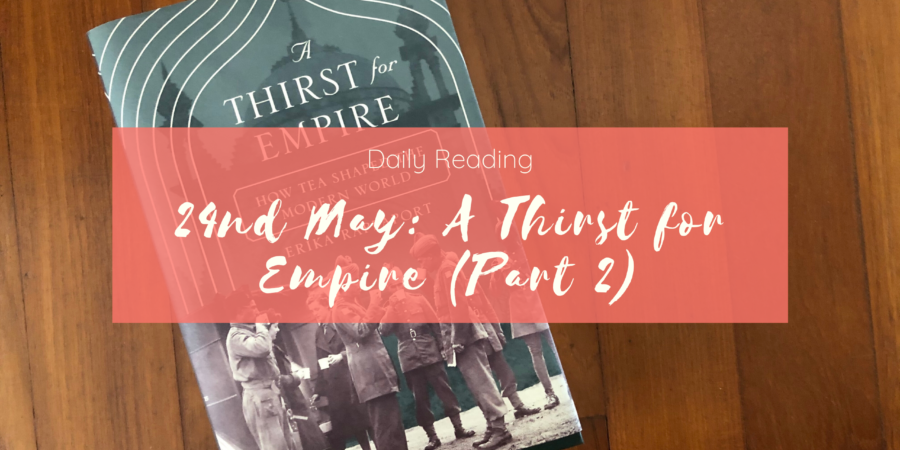I finished part two of A Thirst for Empire today, so if I keep up this pace, I’ll be able to finish the last third of the book by tomorrow! It’s supposed to be a public holiday, but I don’t know if I’ll need to do some work so we’ll see.
Part Two is titled “Imperial Tastes” and as you can imagine, it’s focused on the British empire (actually, I’d argue this is the main focus of the book, actually). I’ve had a lot of thoughts while reading, but I didn’t take notes so I hope not too many slipped away.
First up: the campaign to get the British public to accept Assam/Indian teas. If you’ve tried teas from China and India, you’ll know that they have very different flavour profiles, even for the same type of tea. Apparently one way shopkeepers used to get around that was to blend Chinese teas with Indian teas, to slowly get consumers used to the taste of Indian teas. Indian tea planters, however, were not so pleased with this scheme and wanted British consumers to buy Indian teas because they were from part of the British empire (there was a whole Empire Kitchen campaign to encourage people to buy from various parts of the empire).
Although the marketing of tea was political (see: change from Chinese to Indian teas as the British government wanted to address trade imbalances), advertising to consumers was a different thing. If we look at the Mazawattee Victorian granny advertisements, we see that “sitting by a hearth in a timeless cottage, the old lady with her cup of tea removed the commodity from politics, the market, and other modern troubles. The childish tea drinker functioned the same way […] such images transformed tea drinking into a feminine pastime rooted in a premodern past.” This is quite a change from tea’s introduction, where it was men who could drink teas in public settings while women had to drink it at home!
There was also a section on marketing tea to Indians in colonial India. The way they initially marketed it to the Indian population was problematic (and betrayed racists views of Indians) but I found the parallels between the “Every Kitchen and Empire Kitchen” campaign in the 1920s and 1930s and the swadeshi movement happening around the same period to be fascinating. Here we have two movements that politicise consumerism, very much like modern campaigns to shop local or to boycott certain stores.
The character of Mr. T. Pott and the various ways he was used to market tea in different countries was also fascinating. We know from earlier chapters that tea already has an association with temperance and morality, but here we see these associations in marketing, along with the idea that tea is reviving. With such associations in the Depression, it’s no wonder that tea ended up playing a central role in keeping up morale spirits during the second world war. Marketing messages were altered too – for example Co-op tea marketed itself as being a good choice because it made strong tea and would help make rations go further.
As we can see, tea has come a long way from its initial status as a foreign drink. Although the debates about the health values of tea did not completely disappear in this section (there were huge debates about green vs black tea as the British empire transitioned from Chinese to Indian teas), we can see that tea has managed to make itself part of the British national character, and that it attempted to do the same thing in many other nations as well.
